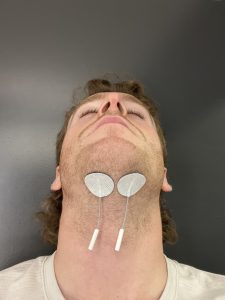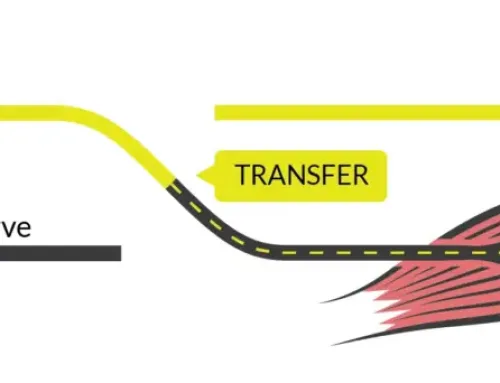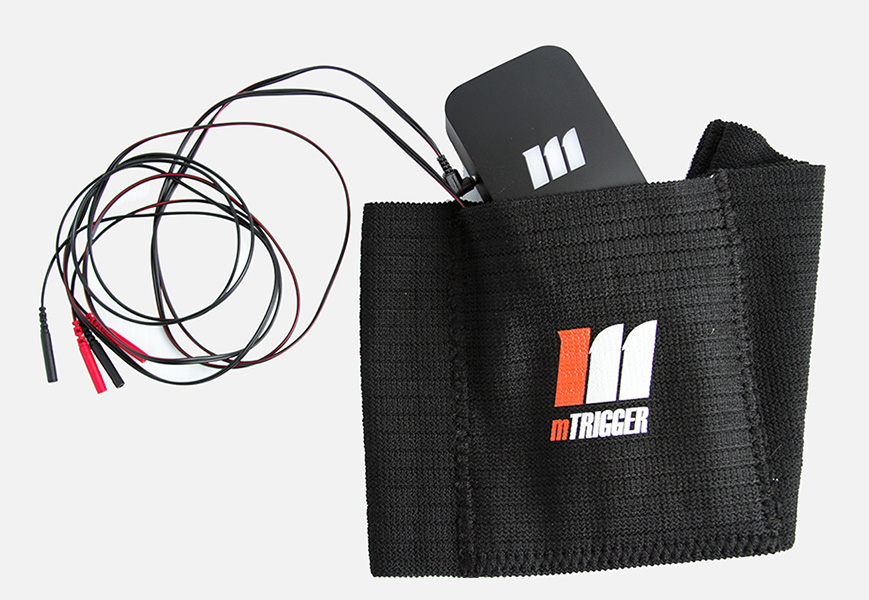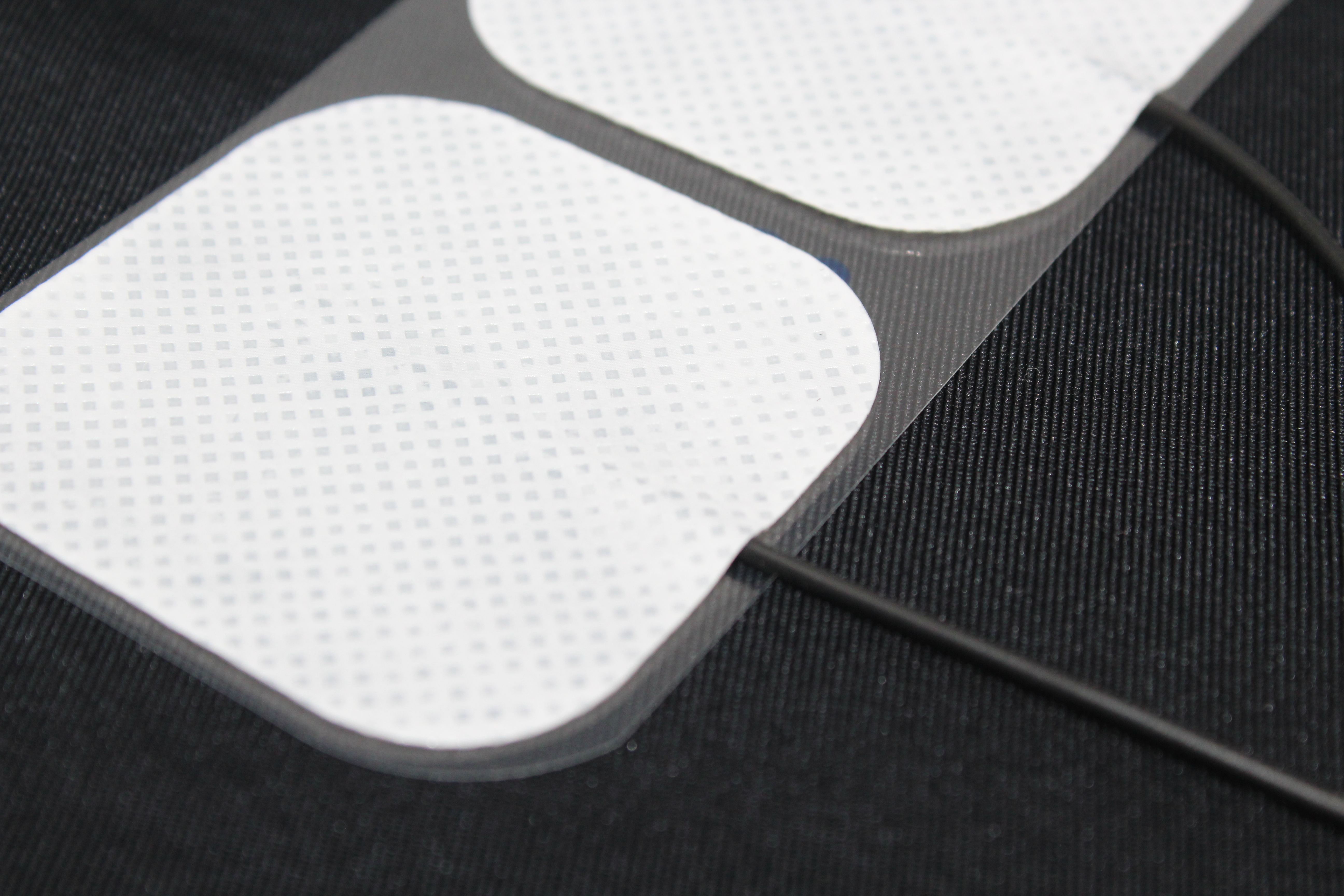Using mTrigger Biofeedback to Improve Dysphagia
Article Authored by: Jamie Schmidt, M.S., CCC-SLP
Difficulty swallowing, or dysphagia, is a common condition that requires a multidisciplinary approach for effective treatment and management. This team often includes speech-language pathologists, physicians, dietitians, and occupational therapists to work together to address the complexities of this condition.
Dysphagia is often associated with neurological disorders including stroke, Parkinson’s disease, and brain injury, but can also be seen in children with cerebral palsy or patients with head and neck cancer, particularly those having undergone radiation therapy. Up to 50% of post-stroke patients will develop difficulty with swallowing.(1,2,3) Dysphagia can lead to serious complications, including coughing or choking during meals, reliance on tube feeding, malnutrition, aspiration pneumonia, and reduced quality of life. In some cases, aspiration pneumonia can be fatal, making it the leading cause of death in Parkinson’s disease.(4)
Recent studies exploring use of sEMG biofeedback in dysphagia rehabilitation have shown promising results for patients with stroke and Parkinson’s disease. (4,5) Swallowing is a highly complex neurological function, requiring precise coordination between neural structures and muscle groups across the oral, pharyngeal and esophageal phases. This process involves both voluntary and involuntary components, with cortical and subcortical integrating sensory input to generate the motor output necessary for safe and efficient swallowing. Most of these muscle contractions are not visible to either the patient or the provider, making it difficult to achieve safe volitional control of swallowing.(6)
As humans, we rely heavily on intrinsic feedback—the sensory information gathered through movement. However, after an injury to the brain or pharynx, the ability to rely on this feedback is often compromised. In these cases, external feedback, such as sEMG biofeedback, becomes crucial in supplementing the loss of intrinsic feedback.(6) By utilizing mTrigger biofeedback, patients receive real-time visual feedback that represents their swallowing patterns, providing critical insights into timing, duration and accuracy during swallowing exercises. This visual representation enhances motivation, engagement and improved motor learning, helping patients regain control over their swallow function.(1,6) With advancements in sEMG biofeedback technology, dysphagia therapy is evolving—offering greater precision, improved outcomes, and increased patient confidence in their rehabilitation journey.
Where to Start
To use mTrigger biofeedback for swallowing, place 1.25” round electrodes on the right and left submental muscles (mylohyoid, geniohyoid, and anterior belly of the digastric) approximately midway between the hyoid bone and the mentalis of the mandible.(1.6)
Once the electrodes are in place, patient-specific dysphagia exercises can be targeted using sEMG biofeedback. Research has shown that effortful swallowing is one of the most effective exercises for dysphagia rehabilitation. This is performed by instructing the patient to press their tongue firmly against the palate while actively engaging the swallowing muscles.(1) When combined with biofeedback, this exercises increases frontal lobe activation, enhancing motor planning and neuromuscular engagement.(1)
After setting the parameters, instruct the patient “Swallow hard, squeezing all your throat muscles and pressing your tongue firmly against the roof of your mouth.”(1) With real-time visual feedback, patients can monitor their muscle contractions and work toward achieving their preset activation threshold during each swallow.(1,5)
Using mTrigger biofeedback during effortful swallowing exercises can help patients to visualize their muscle contractions, allowing them to increase strength, improve volitional control, and enhance overall motor learning.(2) This leads to more effective and time-efficient therapy sessions.(5)
Studies have shown that sEMG biofeedback significantly increases muscle activation during effortful swallowing compared to exercises without biofeedback.(1) Additionally, 86% of patients reported feeling sEMG biofeedback helped them better engage in their swallowing exercises.(1)
It is important to note that submental electrode placement may also capture lingual and neck movements.(6) To ensure optimal signal clarity and accuracy, instruct the patient to remain as still as possible during the exercises.
Summary
Dysphagia can significantly impact function and quality of life, but mTrigger biofeedback provides a powerful tool to help patients regain swallowing function.(1) By offering real-time feedback and quantifiable data, clinicians can objectively track progress, optimize treatment plans and enhance patient outcomes.(1)
Stay tuned for our Dysphagia Protocol, filled with more exercises, COMING SOON!
mTrigger Biofeedback for Occupational Therapists
|
How to Address Drop Foot with mTrigger
|
References
- Archer SK, Smith CH, Newham DJ. Surface Electromyographic Biofeedback and the Effortful Swallow Exercise for Stroke-Related Dysphagia and in Healthy Ageing. Dysphagia. 2021;36(2):281-292. doi:10.1007/S00455-020-10129-8
- Riebold B, Seidl RO, Schauer T. Electromyography- and Bioimpedance-Based Detection of Swallow Onset for the Control of Dysphagia Treatment. Sensors (Basel). 2024;24(20). doi:10.3390/S24206525
- Bykova KM. Measurement of surface electromyography activity during swallowing in paediatrics: a scoping literature review. Eur J Pediatr. 2024;183(10). doi:10.1007/S00431-024-05685-2
- Gandhi P, Steele CM. Effectiveness of Interventions for Dysphagia in Parkinson Disease: A Systematic Review. Am J Speech Lang Pathol. 2022;31(1):463-485. doi:10.1044/2021_AJSLP-21-00145
- Park JS, Hwang NK, Kim HH, Lee G, Jung YJ. Effect of neuromuscular electrical stimulation combined with effortful swallowing using electromyographic biofeedback on oropharyngeal swallowing function in stroke patients with dysphagia: A pilot study. Medicine. 2019;98(44):e17702. doi:10.1097/MD.0000000000017702
- Azola AM, Sunday KL, Humbert IA. Kinematic Visual Biofeedback Improves Accuracy of Learning a Swallowing Maneuver and Accuracy of Clinician Cues During Training. Dysphagia. 2017;32(1):115-122. doi:10.1007/S00455-016-9749-Z









Leave A Comment